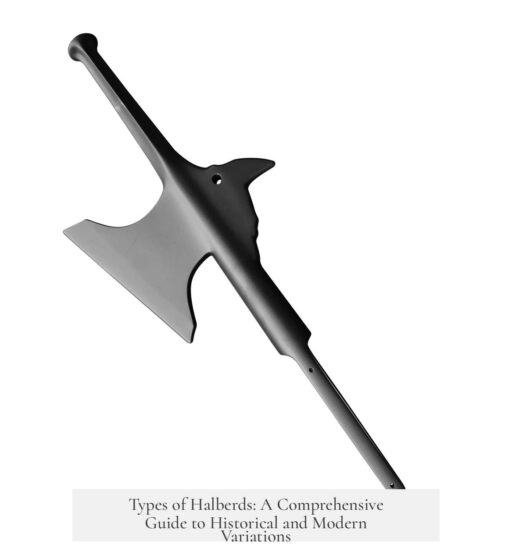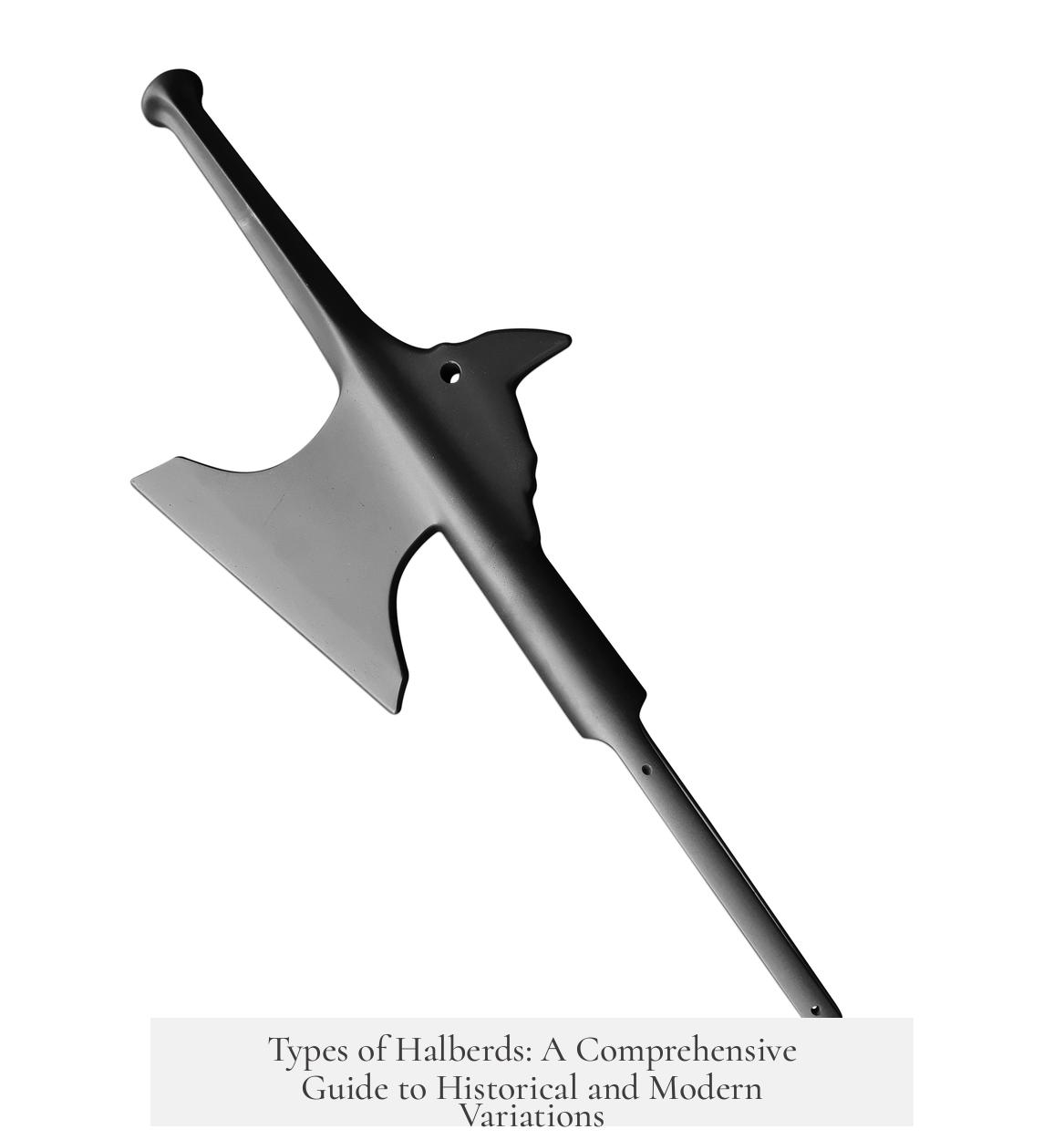Halberd types primarily fall into three main categories: battle halberds, guard halberds, and military halberds used as badges of rank. Each type serves distinct purposes while maintaining the fundamental halberd features of a thrusting spike, cutting blade, and back spike. These polearms range from around 1 kg to over 4 kg in weight and span from 180 cm to nearly 3 meters in length.
Battle halberds are designed for large-scale warfare. They typically weigh about 2.5 kg and measure around 2 meters, balancing enough weight for powerful strikes with sufficient length for reach advantage. This combination allows effective damage against lighter armor (approximately 0.8mm to 1mm plate thickness) while maintaining reasonable speed and maneuverability. Variations in blade shape or spike design minimally affect their combat functionality as long as size and weight specifications remain consistent.
Guard halberds serve ceremonial roles. These often appear ornate and are carried by palace guards or during parades. Sizes and weights vary widely, from very long to lightweight or very heavy pieces. Many feature reduced cutting and back blades, focusing mainly on thrusting capability. Their purpose centers on visual impact and crowd control rather than battlefield effectiveness.
Military halberds later evolved as symbols of rank rather than practical weapons. After halberds declined in battlefield use, some designs merged weapon features with decoration, resembling spontoons. These often have less functional blades and serve as combined insignia and weapon.
Exceptions exist, including some early ultra-heavy halberds more suited for raw impact and some variants less adapted for thrusting. Ancient examples and other cultures present similar polearm weapons sometimes called halberds, like the Japanese naginata, Korean woldo, and Chinese guandao or ji, which differ in form but share functional similarities.
| Type | Weight | Length | Main Use |
|---|---|---|---|
| Battle Halberds | ~2.5 kg | 1.8m–2.2m | Combat with reach and cutting/thrust strikes |
| Guard Halberds | Varies (light to heavy) | Variable (1.3m to ~2.7m) | Ceremonial, parade, crowd control |
| Rank Insignia Halberds | Varies | Varies | Symbolic, non-combat |
Notable museum collections offer visual examples of diverse halberds, from practical battle weapons to ornate ceremonial pieces. Links to specific examples reveal the diversity within each group, illustrating design evolution and cultural variations.
- Classic battle halberds focus on functional cutting and thrusting.
- Ornamental halberds prioritize display traits over combat usability.
- Similar polearms in Asia and ancient Europe carry analogous roles under different names.
Understanding halberd types clarifies their historical roles in warfare, ceremony, and symbolism. Each type’s weight, length, and blade configuration align with its intended function, revealing a versatile polearm family with broad cultural impact.
- Three main halberd types: battlefield, guard, and rank insignia.
- Battle halberds balance weight and reach for effective combat.
- Guard halberds emphasize appearance and crowd control.
- Rank halberds combine weapon features with symbolic purpose.
- Similar polearms exist worldwide under different names and styles.
What are the main differences between battlefield halberds and guard halberds?
Battlefield halberds are about 2.5kg and 2m long, designed for heavy striking and moderate speed. Guard halberds vary widely in size and often have reduced blades, used mainly for show and crowd control.
Why did halberds become symbols of rank rather than battlefield weapons?
Halberds lost practical use in battle over time. Later, they served as rank badges, combining weapon form with decoration, similar to spontoons, marking status rather than fighting purpose.
How do halberds vary in weight and size across types?
Weights range from just over 1kg to above 4kg. Lengths extend from around 6 feet to almost 3 meters. Heavy types focus on power; lighter ones prioritize speed or appearance.
Are all weapons called halberds actually the same type?
No. Weapons like Japanese naginata, Korean woldo, and Chinese guandao differ but are sometimes called halberds due to similar polearm features. Their designs and combat roles vary greatly.
Do halberds always combine a cutting blade, thrusting spike, and back spike?
Most do, offering cutting, thrusting, and hooking functions. However, some guard and ornamental halberds have reduced or vestigial blades, focusing primarily on thrusting or display.




